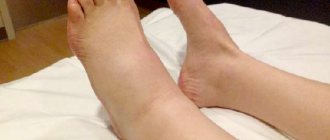Heart attack and stroke are considered the main “killers” of the 21st century. These diseases have a high mortality rate. And if a person survives, he often becomes disabled or has serious complications, which cannot but affect his lifestyle. People who have had a heart attack or stroke have to change their habits. Sometimes this can also apply to driving a car. Can they refuse to replace a driver’s license after a heart attack or stroke, AiF.ru asked lawyer Sergei Kormilitsin . According to him, if these diseases do not lead to serious complications or new diagnoses, then the person has the right to drive a car.
“A heart attack or stroke does not in any way affect the ability to drive a vehicle if it does not result in the development of any diseases from this list - “On the lists of medical contraindications, medical indications and medical restrictions for driving.”
This decree establishes a list of diseases for which you cannot drive vehicles. And in this list there is no mention of a heart attack or stroke, so they have no right to refuse a replacement or issuance of a driver’s license,” the expert said.
Questions and answers When will older drivers fail a medical examination to replace their license?
Consequences of cerebral hemorrhage
There are ischemic and hemorrhagic strokes.
The first occurs as a result of sealing the vascular lumen with a blood clot or thrombus. A certain area of the brain does not receive nutrients and oxygen from the blood, which leads to the death of nerve cells and disruption of important body functions. A hemorrhagic stroke is a rupture of a vessel in the brain, after which a certain area is filled with blood, which puts pressure on the nerve fibers and also causes disruption of brain functions.
The consequences in both cases can be as follows:
Impaired motor skills and loss of coordination. This is often caused by damage to the cerebellum or spinal stroke.
Paralysis of the side of the body opposite the brain hemisphere affected by the stroke. Arms, legs, and facial muscles fail.
Neuropathy, which consists of a violation of the senses - the patient ceases to distinguish smells, tastes, and temperatures.
Visual impairment. It may lose its sharpness, objects in front of the eyes seem to split into two, and the field of view narrows.
Mental disorders. In many cases, people after a stroke suffer from depression, frequent mood swings, nervousness, aggressiveness and anxiety.
Speech impairment - aphasia. The patient cannot speak clearly and has great difficulty perceiving the words of the interlocutor.
Violation of urodynamic function. The patient experiences problems with urination and defecation, and urinary or fecal incontinence occurs.
Disability, inability to work, or death. They often become a consequence of a stroke that affected a large area of the brain, or if medical care was not provided in a timely manner.
In cases where a stroke is defined as a micro-stroke, a small part of the patient’s brain is affected, the chances of successful treatment and recovery are quite high. Violation of body functions is minimal. After completing a rehabilitation course and the conclusion of a special commission, you can drive a car. But this is allowed only after testing. It is absolutely contraindicated to drive a car or work as a driver after paralysis, in case of muscle spasms or epilepsy.
Visual impairment
After a stroke, there is a high risk of visual impairment. A third of victims have similar problems. The body's visual function may recover over time. This occurs when a small area of the brain is damaged.
If a stroke affects a large area of the brain, this threatens the appearance of certain vision problems, and even a complete loss of this function is possible. Thanks to competent treatment used in the fight against stroke, most vision problems that arise can be solved.
There are areas in the brain that are responsible for visual function. If they are affected as a result of a stroke, then various deviations in visual function are possible.
You need to pay attention to symptoms that will help determine which part of the brain is damaged and how extensive the necrotic changes are. The patient may:
- lack of lateral vision;
- oculomotor nerve palsy;
- there is a lack of peripheral vision;
- there is loss of visual fields.
If the eyes do not open after suffering a stroke, then the optic nerve is damaged. It is located close to various parts of the brain. Due to hemorrhage or ischemic disease, the optic nerve is affected, the consequences are as follows:
- bulging eyes;
- optic nerve atrophy;
- double vision.
Rehabilitation activities
People who have suffered from a stroke quite often ignore the ban on driving if they feel “healthy”. It is difficult to give up the habit of using your own rather than public transport. And the patient gets behind the wheel of a car without prior rehabilitation and passing tests, without thinking about his own safety and the risk to others.
The general ban on driving after a stroke is three to six months. During this period, the body will be able to recover to a satisfactory state. Types of rehabilitation measures:
To restore muscle performance, sessions with a physiotherapist are prescribed.
Exercises with a speech therapist aimed at restoring correct speech and swallowing function.
Massage to tone muscles. Prescribed by a specialist depending on the severity of the disease.
Adaptation to everyday life and complex drug therapy.
Vision diagnostics. Contacting an ophthalmologist is mandatory if the question arises about whether you can drive a car.
Psychological help. Patients who often become depressed, sad and cry need sessions with a qualified psychotherapist.
All of these procedures are aimed at speedy recovery of the patient. Even with minor brain damage, it is necessary to undergo a rehabilitation course to prevent a relapse, especially in a driving situation.
Is it allowed to work as a driver?
A decision on this issue is made by a special commission after a detailed examination and receipt of the results of all tests.
In general, of course, experts recommend changing your profession, because the person behind the wheel is responsible for the lives of passengers.
In addition, recovery from a hemorrhagic type of disease is more difficult.
In fact, you can drive a car in no less than three months. In other countries of the world, the recovery period does not exceed 30 days. It is the doctor who must inform the patient about the dangers of working as a driver after this neurological disease, because it is accompanied by:
- increased blood pressure;
- panic;
- frequent stress.
All these factors are precursors of cerebral hemorrhage. Emergency situations on the roads cannot be ruled out. If, in addition, the driver speaks inarticulately, then conflicts with law enforcement officers may occur.
The conclusions of the medical commission depend on the general health of the patient, the type of neurological disease and the degree of damage. In any case, it must be remembered that a relapse can occur at any time. Older people are at risk.
Taking tests
After the driving ban expires, a medical commission evaluates the patient’s condition, identifies possible complications and issues a conclusion whether the patient can drive. The tests are as follows:
Testing your knowledge of road signs. The patient's ability to correctly and quickly recognize traffic signs and respond to them is assessed. Visual perception is tested.
News Media2
Orientation in the surrounding space. The purpose of the test is to determine the quality of vision and the ability to coordinate one’s actions in a specific situation.
The task is to independently plot a route. Allows you to draw a conclusion about the adequacy of the patient’s thinking and check the correctness of his reasoning, as well as evaluate attentiveness.
This test was developed by Belgian scientists after studying the medical records of 1,700 patients. Half of them successfully passed the preliminary driving test in a car with an instructor. The new proposed test takes much less time (only 15 minutes) and can be performed in a doctor's office. With 80-85% reliability, the test shows who can drive a certain time after a stroke, and allows you to evaluate not only motor skills and vision, but also the patient’s thinking.
What are the dangers of driving after suffering a brain stroke?
People who have had a stroke are at risk of relapse. Stressful situations, which cannot be avoided on the road, can provoke a second blow. If an attack occurs while driving, it will be difficult to avoid an accident. Not only you, but also passengers, drivers of neighboring cars, and pedestrians can get hurt.
Also, even specialists may miss some residual disorders left after a stroke. Signs of unsafe driving:
- driving too fast/slow for specific road conditions;
- ignoring road signs, traffic lights, signals of other road users;
- incorrect/slow selection of distance;
- loss of orientation in familiar places;
- non-compliance with lanes (driving between lanes, shifting into adjacent lanes unnecessarily);
- the driver cannot drive the car independently, asks for help, tips from passengers, and reacts excessively emotionally to what is happening.
At the first signs of a stroke: headache, dizziness, ringing in the ear, you must immediately park the car. Further driving is contraindicated, even if the condition improves.
Possible problems
Even after successful rehabilitation, the patient may be unable to drive a car. A number of serious problems can prevent this:
Lack of clarity of thinking.
It is difficult to assess the situation on the road.
Untimely reaction and inhibition of actions.
These factors adversely affect driving behavior. The patient poses a risk to other road users and can be seriously injured. Severe deterioration of the visual field and cognitive impairment after a stroke are categorical contraindications for driving.
In 70% of cases, after a stroke, cognitive impairment occurs (the functioning of complex brain functions, for example, memory, attention, orientation, decreases). It is they that cause concern among specialists, since it is not possible to determine with a sufficient degree of certainty the impact of these disorders on the ability to drive a car.
Difficulty driving a car after a stroke
People who have suffered a stroke are in no hurry to part with their usual lives. Driving enthusiasts can ignore doctors' instructions and get behind the wheel. This happens in 35% of cases. Scientists from Canada have conducted interesting research on this matter. They tested 20 people of the same age, half of whom suffered a mild stroke. The other 10 people were healthy. For special testing, a simulator was used to recreate urban conditions, but no transport was used. It was possible to drive on the highway and there were turns. Experts noticed that people after stroke made 2 times more mistakes compared to healthy drivers. It was especially difficult for them at turns, intersections and while following a distance.
Scientists believe that stroke survivors need to think carefully about whether they should get back behind the wheel. After all, they experience disturbances in brain activity, and such phenomena are possible even after a decent amount of time after the impact. Motor impairment also occurs.
Doctors warn that due to stressful situations that often arise on the road, a second stroke may occur. It is more difficult for people who have had a hemorrhagic stroke.
Under favorable conditions, you will be able to get behind the wheel after a stroke no earlier than after 3 months. In Canada, this period is reduced to 1 month. There are no clear restrictions on this in the US.
If a person experiences attacks of transient ischemic attack, then stroke can strike at any moment, so doctors refuse to drive in this case.
Even an experienced driver is not immune to the fact that while driving his nervous system will become overexcited, he will experience stress, and have a panic attack. All this provokes an increase in blood pressure, after which a stroke is possible.










